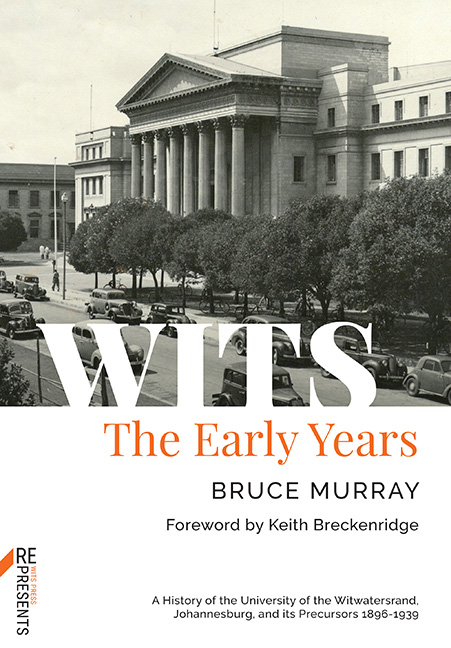8 - Ascendancy of the Professions
Published online by Cambridge University Press: 24 November 2023
Summary
Between 1928 and 1939 student numbers at Wits expanded by about 40 per cent, from 1476 to 2544. The most dramatic growth was in the Faculty of Engineering, including architecture, from 267 to 829, and the Faculty of Medicine, from 231 to 740. Dentistry slightly more than doubled, from 23 to 57. Arts and law, by contrast, experienced an actual decline in numbers. From an enrolment of 571 in 1928, Arts dropped to 445 in 1935, recovering to 539 by 1939. Law declined from 45 in 1928 to a low of 31 by 1939. Enrolment in commerce was extremely erratic. From a peak of 205 in 1928, numbers dropped to 186 in 1931, attained a new peak of 294 in 1934, and had fallen back to 206 by 1939. Science experienced a very slight growth, from 134 in 1928 to 143 in 1939.
Despite financial constraints, the thirties were not without significant new developments at the University. Arts was the most active faculty in promoting developments. The Departments of Bantu Studies and Afrikaans and Nederlands gained chairs; a new degree of B.A. in Social Studies was instituted in 1937, and for it was created a Department of Sociology and an independent Department of Psychology with its own chair; a four-year course for the B.A. Honours in fine arts was introduced; and a two-year diploma in logopedics initiated. In other major developments dentistry had become a separate faculty in 1929, acquiring a chair of dentistry in 1931; the chair of accounting was converted into a chair of commerce in 1930; and law received a second full-time chair in 1935. In engineering, electrical engineering gained the status of an independent branch for the B.Sc. (Eng.), and in 1936 mining geology was established as a new branch for the degree. At the medical school a diploma of nursing was established in 1937, and in 1939 a diploma in massage, medical gymnastics, and electrotherapy, the forerunner of the diploma in physiotherapy, was introduced.
In the latter half of the thirties, once the University’s finances began to recover from the depression, there was a quite considerable increase in the teaching staff, and generally staffing increases reflected those in student enrolment.
- Type
- Chapter
- Information
- WITSThe Early Years, pp. 234 - 294Publisher: Wits University PressPrint publication year: 2022



